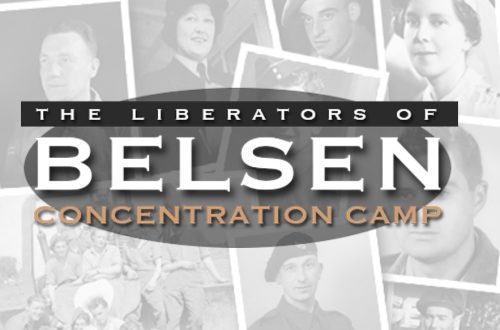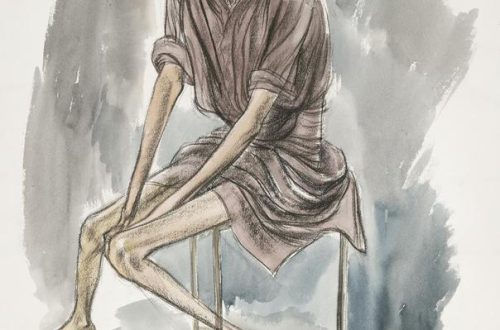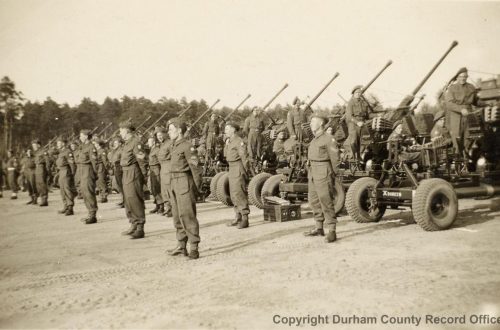George Leonard (63rd ATR)
Even before it had been officially liberated by the 11th Armoured Division on April 15, 1945, George Leonard was there behind enemy lines with a tiny force of just 200 soldiers under a flag of truce.
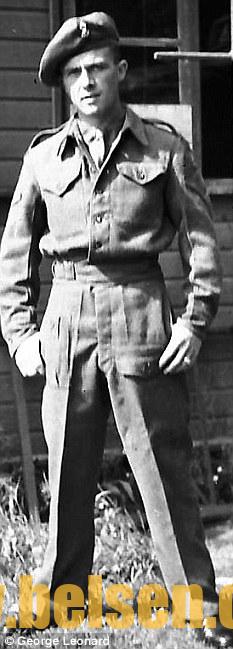
He reveals how two SS guards were shot dead by British soldiers and that when news of the Army’s arrival spread, the camp was on the brink of anarchy as inmates went on the rampage.
The British soldiers were forced to shoot above their heads to maintain a semblance of order.
The men of the Oxfordshire Yeomanry, part of the 63rd Anti-Tank Regiment, were in the camp as a result of an extraordinary deal that was made between the Allies and the German army’s high command in the closing stages of the war.
As defeat loomed for the Nazis, there was concern on both sides that if the German guards withdrew suddenly from the camps the inmates would spread typhus among the civilian population.
The disease had reached epidemic proportions in the concentration camps; it had killed Anne Frank in Belsen a few months before George Leonard arrived.
Mr Leonard, now a surprisingly fit 90-year-old living in Llantrisant, Wales, recalls clearly the moment they were told to prepare for their unique mission.
‘We got an order to take down all our camouflage and put on our best battle dress.
‘We had no idea what was going on. Then we saw Major Ben Barnett, our commanding officer, raising a white sheet.
‘We knew then that we must be going through the German lines under a flag of truce.’
Mr Leonard drove forward in his Crusader tank, towing a limber full of ammunition and a 17-pounder anti-tank gun.
It was one of a cumbersome and unwieldy chain of vehicles and once into no man’s land there could be no turning back.
Soon they had left the Allied lines behind them and advanced across open country towards the village of Bergen, north-east of Hanover.
As they approached the German lines, Mr Leonard and his fellow soldiers fell silent, their fingers tensing on the gun triggers.
‘The Germans in front of us just parted,’ he says.
‘They stood to the side of the roads and just watched us going by. It was absolutely quiet, just the sound of our engines.
‘They seemed sullen. No one spoke, but it was frightening: we were terribly vulnerable and outnumbered if they had attacked us.’
Mr Leonard’s column pushed on and eventually reached the camp of Bergen-Belsen at about nine in the evening.
The men drove on to a large parade ground, surrounded by smart, three-storey buildings. ‘I remember thinking, “If this is a concentration camp, then it doesn’t look too bad,” ‘ Mr Leonard says.
In fact they were in the barracks area, where the SS and regular army troops lived.
The real camp was hidden among the trees, and Mr Leonard’s A Troop was detailed to be the first British detachment into the camp itself.
There were just 35 men and they had no idea of the horrors that awaited them. What they saw would stay with them for the rest of their lives.
As they advanced through the trees, they saw hundreds of people lying on the ground.
‘There were bodies everywhere. At first, you didn’t think they could all be dead, but they were.’
He described the scene in his letter: ‘Dead bodies – some of them burnt and horribly mutilated – just lie about all over the place. I’d say there were approx 50,000 dead.’
The camp was guarded by 700 Hungarian troops, about 300 Wehrmacht (regular army) men and a group of SS men and women, who were in charge.
There were about 60,000 inmates and, in fact, 30,000 dead bodies.
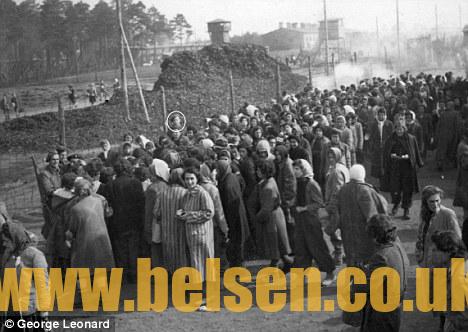
The truce allowed for the Hungarian and Wehrmacht troops to wait for the British front line to pass over the camp, then they would be allowed safe passage back to the German lines or could surrender.
The deal made no mention of the SS and the British soldiers arrested them immediately.
Mr Leonard wrote: ‘We rounded up all the SS men and the SS girls, then we locked them up in cells. The next day we took them out and made them bury the dead.
‘Some of them didn’t seem to like the job very much, so we had to persuade them in our way.”
‘That night we locked them up again – and in the morning one of them had committed suicide, the next day two more thought that life wasn’t worth living.’
I ask him what that line in his letter meant. Had they killed themselves too?
‘They were shot trying to escape,’ he says.
Were they really trying to escape?
‘They were shot trying to escape,’ he repeats and we move on.
The body of one of the SS men shot by the British can be seen in one of the pictures of the mass graves at Belsen.
Mr Leonard’s letter does not attempt to hide his own feelings.
‘I’ve never felt so cruel or heartless as when we were making those swine clear up the dead,’ he wrote 65 years ago.
‘We had a huge grave – over 100 yards long and about 20 yards wide by 20 feet deep, the last time I was making them work we nearly filled it. I still feel sick when I think of it…’
We ordered the SS men to bury the dead. They didn’t like it, so we persuaded them…our way
Dealing with the SS was one thing, dealing with the thousands of camp inmates who ‘went mad’ quite another.
Mr Leonard wrote: ‘Just try to imagine 60,000 people, who had been starved, beaten, kicked and tortured, who hadn’t seen food or water for nearly a week, just think of all that crowd gone mad just smashing everything.
‘Then imagine 35 men trying to push them all back without hurting or shooting anyone – and remember all this was happening in the dark.’
A troop kept the crowds of jubilant inmates under control for the night before they were joined by another 35 men in the morning – but still the situation was on a knife-edge.
‘We all separated and walked into the middle of the crowd,’ Mr Leonard wrote.
‘We had to shoot over their heads to keep them back. One girl was looting a store. I shouted at her to go away but she didn’t so I fired at the wall – little pieces of brick were flying all over her – and then she just stood up, laughed at me and said, “English Tommy won’t shoot any of us.” ‘
Of course, the inmates were right. Mr Leonard recalls being surrounded by prisoners wanting to touch him, one large Russian man fell to his knees and kissed the British soldier’s boots, but no one could make themselves understood.
When food and water arrived in the camp, the inmates began to calm down.
Mr Leonard met a young Hungarian Jew, Sonja, a ‘lovely girl’ who could speak some English and acted as his interpreter.
‘The first night she hadn’t eaten for over a week,’ he wrote in his letter. ‘When I saw her the next day she was just like a child, she had had plenty to eat and drink – I’ve never in all my life seen anyone so happy.’
The inmates soon discovered where the SS had buried the valuables they had taken from prisoners when they arrived at the camp.
Suddenly, everyone was wearing watches.
Mr Leonard was given several and today his younger daughter Vivien still has one of the Belsen watches which she inherited from her mother Gwyn, who died nine years ago.
Today, reflecting on those days, Mr Leonard stands up from his armchair and walks across his sitting room – a distance of no more than 8ft.
‘In Belsen, I couldn’t walk this far without treading on, or stepping over, a body. It was that bad,’ he says.
Despite the passage of time, the memory of what he saw in Belsen still visibly disturbs him.
British soldiers had no real idea what to expect when they reached the camps.
As Mr Leonard says in his letter home: ‘I never used to believe all that sort of stuff in the papers and on the films, I always used to think that it was just propaganda to make us hate Jerry more.
‘But now I can tell you this – there is nothing you have seen on the films, or read in the papers that is half as terrible as Bergen-Belsen camp was when we liberated it.’
He feels strongly that subsequent generations must not forget what happened, but the enormity of what he experienced is overwhelming.
Mr Leonard admits as much in the letter he wrote all those years ago: ‘I’ve tried to tell you what it was like, but I doubt if there is a man living who could put into words what it was really like…’
Archive. Daily Mail 2nd April, 2011
11,419 total views


